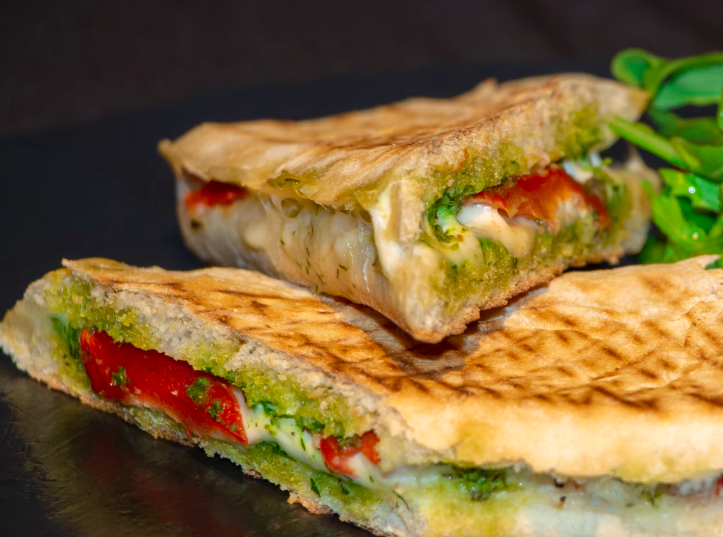
Investing in a commercial contact grill is a significant decision for any food service establishment. Whether you're running a cafe, a fast-food outlet, a restaurant kitchen or a food truck, a contact grill is essential for quickly serving up customer favourites like toasted sandwiches, Paninis, and much more. Let's explore the critical considerations to ensure you make the best purchase for the efficiency and success of your kitchen.
What is a Contact Grill Used For?
A commercial contact grill and panini grill, often known as a Panini press, is a versatile appliance used extensively in commercial kitchens. It's not just for toasted sandwiches or Paninis; it's an all-rounder that can handle burgers, sausages, bacon, and eggs, as well as fish and vegetables. The variety of foods that can be cooked makes it an invaluable tool for establishments that value efficiency and versatility in their cooking equipment.
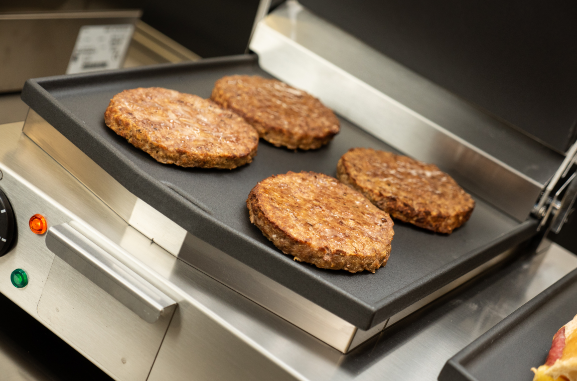

What is the Difference Between a Grill and a Contact Grill?
The primary difference between a traditional grill and a contact grill lies in their cooking methods. A traditional grill cooks food from one side, usually the bottom, and requires manual flipping for even cooking. In contrast, a commercial contact grill cooks food from both the top and bottom simultaneously. This feature not only speeds up the cooking process but also provides consistent results, as the top and bottom plates of the grill apply an even pressure on the food, promoting uniformity in cooking.
How Does a Contact Grill Work?
A commercial contact grill operates through direct heat transfer, utilising heated plates on both the top and bottom. This setup allows for faster cooking times, as it eliminates the need to flip the food manually. Contact grills, sometimes referred to as clam griddles, create pressure and a direct transfer of heat to the food, resulting in evenly cooked meals with desirable textures and flavours. This design ensures faster cooking times and can lead to a more consistent product since both sides are being cooked at the same rate.
What are the Benefits of a Contact Grill?
The multifunctionality and versatility of contact grills make them a valuable addition to any commercial kitchen. With a full range of options to choose from, such as plate materials, plate finishes, size and capacity and other features, cafes, restaurants or bistros can create a varied menu with their desired finish.
Choosing a Contact Grill and Panini Grill
What Material are Contact Grill Plates Made From?
The most common materials for contact grill plates are aluminium, cast iron, and ceramic.
Each material has its own benefits and care requirements, so consider how often and for what you'll be using the grill when choosing.
Aluminium
- Best for occasional use.
- Rapid heat-up and recovery.
- Generally cheaper than cast iron.
- Good heat transference however may be quick to cool.
- Requires non-stick oil or spray.
- e.g. Prince Castle NCG8-TG


Cast Iron
- Ideal for continuous use.
- Even heat distribution and retention.
- Produces a non-stick finish when seasoned.
- More expensive.
- Longer heat-up time.
- e.g. Chefmaster HEA750 Large Single Contact Grill


Non-stick/Vitroceramic/Glass Ceramic
- Offers benefits of both aluminium and cast iron.
- Easy to clean and quick to heat up.
- Non-stick properties.
- It may be easily scratched.
- Vitroceramic/Glass ceramics have smoke-free operation.
- Can be more expensive.
- e.g. Sirman PDVC LR T Ceramic Flat/Ribbed Panini Grill
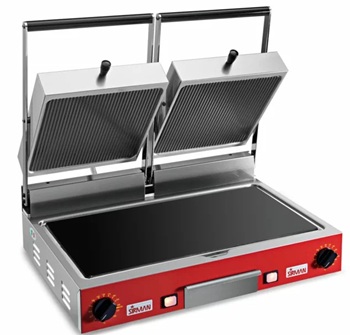

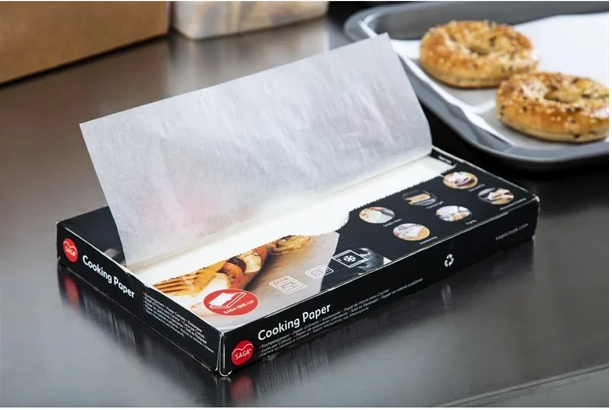

Top Tip: Use Panini paper to reduce the frequency of cleaning.
Plate Finish Options & End Results
Grilling plates are available with smooth, ribbed, or mixed finishes, each producing a different finish to foods. Here we look at each a little more closely.
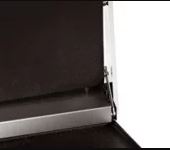

Smooth Plates
- Great for sandwiches, burritos, and wraps.
- Uniform contact and clean finish.
- Easy to clean.
- e.g. Hallco MEMT16053XNS Smooth Non-Stick Panini/Contact Grill


Ribbed Plates
- Great for meats, vegetables, fish, and sandwiches with grill marks.
- Authentic branding and marking.
- Appears as if cooked over an open flame.
- Ribbed plates allow fats and grease to drain away.
- Slightly more difficult to clean.
- e.g. Blizzard BRSCG2 Double Contact Grill


Mixed Plates
- Offers both smooth and ribbed plates.
- Versatility for various menu items.
- e.g. Hamoki PG-2SC Ribbed/Smooth Contact Grill
Size & Grilling Capacity
Panini makers come in various configurations, including single contact grills with single plates, double contact grills with upper and lower large cooking plates for higher production. Double panini grills will have with large base plates with a single large top plate, large base plates and two independent upper plates, or twin base plates and twin upper plates. Where separate plates are used, each side will typically offer independent heating and control, allowing different products to be cooked simultaneously.
How Do You Season a Contact Grill?
Seasoning a cast iron contact grill is essential to maintain its non-stick properties and prevent rust. The process typically involves coating the grill plates with oil and heating them to form a protective layer. For a detailed step-by-step guide, refer to our Basic Care for your Cast Iron Cookware & Equipment blog post including tips for seasoning cast iron.
What Contact Grill Features Should I Look For?
When shopping for a commercial contact grill, consider the following features:
- Power Requirements: Most contact grills run on a standard 13A plug, with some models requiring two plugs. Some may require single or 3 phase hardwiring, so always be sure to check power requirements before making a purchase to avoid additional costs of either updating your buildings power supply or returning equipment that has been ordered incorrectly. Read more about Deliveries & Returns.
-
Size of the Overall Unit and Cooking Plates: The size of the commercial Panini grill should align with your kitchen’s available space and your expected volume of orders. A larger unit with more cooking space can cook more food simultaneously, crucial during peak times. However, a larger unit also takes up more space and consumes more power. Not only are overall dimensions and whether you have the counter space available to house the equipment, a basic factor to consider but also the size of the cooking area. These sizes will vary on the design and layout of the contact grill, and will depend on how the grill is used and what it is used for.
-
Brand: Entry-Level, Mid-Range, or Premium: Choosing a brand is not just about price; it's about reliability, efficiency, and the quality of the after-sales service. Entry-level grills such as Hamoki, Buffalo, Chefmaster, Hallco are cost-effective but may not withstand continuous heavy-duty use in a busy commercial kitchen for the length of time that mid-range or premium models can. Mid-range models including Blizzard, Sirman and Waring offer a balance of quality and value, while premium brands such as Lincat clam griddles provide advanced features, better build quality, and possibly a longer lifespan.
We always recommend investing in the best equipment that your budget, which will allow you to benefit from build quality, features, performance and longevity. Opt for reputable brands that are known for their quality and reliability in commercial catering equipment.
-
Level of Warranty Cover: The level of warranty coverage can significantly impact the long-term value of your commercial contact grill and is vital for safeguarding your investment. A comprehensive warranty can safeguard against defects and malfunctions, ensuring that your investment is protected. Look for warranties that cover parts and labour for at least a year for peace of mind that should you experience any problems, both replacement parts and engineer call-outs and repairs will be covered. Read more about commercial warranties.
Advanced Features & Specifications to Consider
- Adjustable Temperature Controls: This allows for various fillings and uses to be grilled that may require different heat settings.
- Timers: Look for grills with built-in timers to ensure consistent and repeatable cooking results.
- Lid Design: A counterbalanced lid is essential as it stays open for easy loading and unloading of food.
- Floating Plates: Sometimes refered to adjustable or counter-balanced hinges. These adjust to the thickness of the food, providing a uniform finish without applying too much pressure and crushing food.
- Removable Plates: This provides easier cleaning of the equipment after use.
- Grease Management: Integrated grease trays are important for managing run-off and keeping the cooking area clean.
- Energy Efficiency: Models with energy-saving modes or standby options can reduce operating costs during quieter periods.
Choosing the right commercial contact grill is about matching your specific needs with the features available. Consider the types of food you’ll be preparing, the volume of orders, your kitchen space, the preferred material for the grill plates, and the features that will streamline your operations. With these considerations in mind, you can select a contact grill that will serve your establishment well and provide a good return on your investment.






